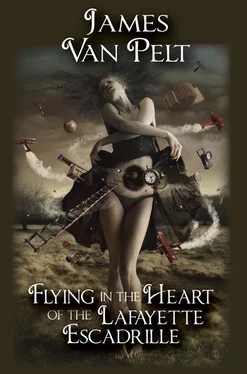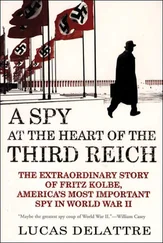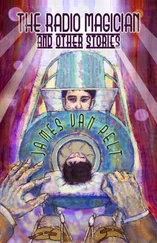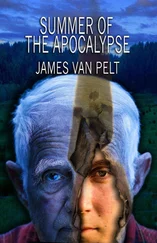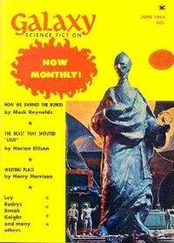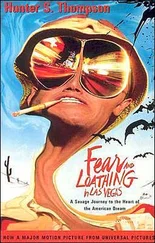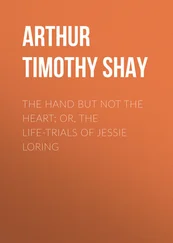She brushed her fingers over the telescope’s thin metal, an old friend. They’d spent hours untangling the universe’s many twined lights. As long as she had the telescope and the night sky, she’d never be truly unhappy, regardless of whatever Joan said about unacknowledged desires. She chuckled in relief.
Then, a movement caught her eye. She stayed her hand on the telescope. Had something behind her bedroom window shifted?
Whatever it was, it wasn’t moving now. Standing stone still, she studied the window. Was that a reflection off wavy glass? Or was it a face looking out? Her eyes froze open; she couldn’t take them off the image. Had she locked the front door? She knew she had, or at least she was pretty sure she had. She always locked the door when she came in. Of course, she always turned off the radio when she left, but hadn’t it been on when she came home?
Keeping her head steady, her eyes focused on the window, she took a step to the left, away from the telescope. The face disappeared.
She stepped back. Moonlight did reflect from the window; the glass was wavy, but it didn’t look like a face now, only like shimmery glass. There’s no way I could mistake that for a face, she thought. There’s no way. She moved again, tried to see a forehead in the reflection, a cheek’s curve, the dark shadow under a nose. Maybe it was there, but the moon had advanced in the sky a tiny bit. Maybe the image required an exact alignment of light and viewer. Maybe there was no image at all, only nervousness about a new house.
Never looking away, she unscrewed the counterweight and slid it off the shaft; its bulk filled her hand reassuringly. The porch door creaked. Meadoe reached around the corner to turn on the light. Shadows fled, and within seconds moths fluttered against the screens. She repeated the move on the back door; the back of her hand and wrist screaming their vulnerability when she stuck them in the dark to find the switch.
Light flooded the empty room, and the rest of the house was just as empty. In her bedroom, feeling foolish, she put the counterweight on her dresser.
The posters on the wall almost glowed. Meadoe sat on her bed again, as she had in the afternoon, and studied them. Ingrid Bergman looked wistfully into the distance. Fred Astaire danced across a ballroom floor. The wolf man glared straight into the camera. Planes diving. Battleships sailing. VICTORY IN EUROPE trumpeted a headline. It’s practically a museum, she thought. A moment in time captured on the wall. She thought of her own photographs taken through the telescope, also snapshots in time. The scale was different; some of her subjects were millions of years away, but the principle was the same. Captured time.
She squinted at the wall. There was a pattern in the design, an order. Not straight lines, but lines nonetheless. The Life covers formed three curves; the hand drawings two more; the movie poster swept in their own arc. News articles and war photos filled the gaps but created a sight line too. It took her a while to decipher the underlying purpose, but as she lay on the bed, letting her eyes roam from image to image, it became clear. All lines led to Tokyo Rose. No matter where one started, the natural flow was to the Japanese beauty.
Later, she read with all the lights on, then decided that was silly. She checked the doors and windows again, flicked the living room and kitchen lights off. With only her reading light on, she closed the book and rested it on her chest. She listened with half an ear to a radio drama about someone named the Great Gildersleeve. Some of it was pretty funny, and it took her mind off sounds she couldn’t identify: a metallic rattle that might be a pipe expanding, a thump and buzz that might be the refrigerator cycling, a dog barking. There wasn’t enough light to see the posters now, and the window was a gray square leaking moonlight. She worried that someone might look in, and she laughed. No matter what side of the window I’m on, I’m scared of the other! Tomorrow she would hang curtains.
She turned off the radio and the light and slipped into a dream. It seemed she’d slept for a long time, and she knew she was dreaming. In the dream she rested on a white beach, like one of the models on the cover of Life , like Rita Hayworth, and the sun beat down hot, oppressively hot. Overhead a plane rumbled across the sky, too far to identify, but clearly military, a B-29 maybe. She rolled. In the dream she shifted away from the sun, but she felt blankets on her shoulders and knew she rolled in bed too. It was so hot. I should find some shade, she thought. I need sunscreen. Waves hissed in the dream. Heat shimmered off the sand blurring the horizon.
Someone stood beside her. It was too hot on the beach, and it robbed her strength, but she could feel him standing there. For a long time he said nothing, and she thought, if only he would set up an umbrella.
Then, he touched her back. His hand was smooth, and the overheated skin felt instant relief. She closed her eyes against the brightness, could feel sand beneath her cheek. The hand moved. It stroked to her shoulder blades and down to the base of her spine spreading coolness the whole way. Meadoe moved into the stroke. Then softly, a voice in her ear.
“Do you trust me?”
She woke, screaming, and the bed was sweat-soaked again. She had to flip the mattress before putting on dry sheets.
In the morning, her linen drawers were open and once folded clothes piled messily within.
August 2, Research: Sunday Morning
The library didn’t open until noon on Sunday, so Meadoe disarmed the alarm system before entering. The lights were off. Flyers from different publishing houses touting their newest releases covered her desk, and she moved them aside to give herself room to work. The Real Estate/Assessor’s Office didn’t have a web page but the City and County Records Office and Building Permits did. She punched in her address. After a few seconds search, a list of names and dates scrolled onto her screen with her name at the bottom. From 1928 until 1945 the house had two owners: the Belascoes who owned it until 1940, and the Shirleys who owned it until September of 1945. Since then the house had changed hands seventeen times. The realtor said young couples bought the house, and then moved out when they had children. Meadoe tapped her fingernail against the keyboard. She typed in her neighbor’s address to the north, a house that looked very much like hers from the street. Three owners since ’45. The house to the south of her, four owners in the same time period. Across the street, two owners. She checked another dozen addresses in the neighborhood. None had more than four owners since the end of World War II.
Scrolling back up the screen, she returned to the Shirleys. Howard J.T. Shirley bought the house in May of 1940. Margaret L. Shirley cosigned the loan. Wife? Mother? Sister?
A name search for Howard J.T. Shirley brought her to a Shirley genealogical site where she found he died in 1982. Margaret L. Shirley, his wife, died two years later. The site listed one child, Nathaniel Shirley, born January 15, 1929, died August 6, 1945. He was sixteen when he died, the same day the atomic age opened its awful eye over Hiroshima. Meadoe could hear her father’s voice, thickly accented, “Your grandfather dug all day for the rest of his friends. Dirt covered their faces. There were scars on his arms from broken glass in the rubble.”
Nothing turned up on a search of Nathaniel’s name.
The historical archives were in the basement. Turning on lights, Meadoe worked her way to the local history shelves. On the top row, Harriston High School annuals. Nathaniel smiled from the juniors section in the 1945 book, and the little hairs on her arms stood straight up as they had when she’d pulled down the wallpaper. She wished she’d brought a sweater.
Читать дальше
